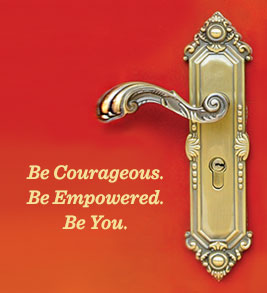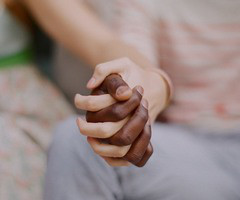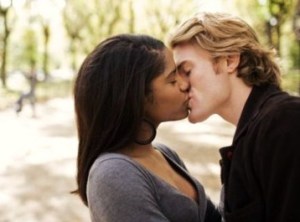Ryan Knapick and Josh Baker have been best friends since fifth grade. Colette Gregory entered the picture in high school. She and Josh are dating now. Knapick is white, Gregory is black and Baker is half-Hispanic. To them, race doesn’t matter.
“People are finding people with common interests and common perspectives and are putting race aside,” says Knapick, 22, a May graduate of Indiana University who works at a machine shop and lives with his parents in Munster, Ind.
He and his friends are among an estimated 46.3 million Americans ages 14 to 24 — the older segment of the most diverse generation in American society. (Most demographers say this “Millennial” generation began in the early 1980s, after Generation X.) These young people have friends of different races and also may date someone of another race.
This age group is more tolerant and open-minded than previous generations, according to an analysis of studies released last year by the Center for Information and Research on Civic Learning and Engagement, part of the University of Maryland’s School of Public Policy. The center focuses on ages 15 to 25.
Another study by Teenage Research Unlimited in Northbrook, Ill., found six of 10 teens say their friends include members of diverse racial backgrounds.
Unlike their parents and grandparents, today’s teens and twentysomethings grew up with “diversity,” “multicultural” and “inclusion” as buzzwords. Many were required to take college courses in cultural diversity. Now the media fuel this colorblindness as movies, TV and advertising portray interracial friendship and romance.
Some attitudinal changes are based in demographics. About 33% of those under 18 are racial or ethnic minorities, and about 20% of elementary- and high school-age students are immigrants or children of immigrants, according to the U.S. Census Bureau.
Racial diversity is especially common in college friendships because that age group is exposed to a wider range of people, and college students have more opportunities to become friends with peers of other races, says Anthony Lising Antonio, an associate professor of education at Stanford University, who has conducted research on friendship diversity.
It’s not that young people are specifically seeking out friendships with other races, kids say.
“It goes beyond that to who you get along with,” says Karina Anglada, 17, a high school senior in Chicago whose parents are from Puerto Rico.
The ‘color-mute’ syndrome
Rebecca Bigler, 42, a psychology professor who directs the Gender and Racial Attitudes Lab at the University of Texas-Austin, traces such attitudes to baby boomer parents who may have set a tone for raising colorblind kids.
“It makes us feel racist if we acknowledge race, so we try not to, and we end up being color-mute,” she says. “Children learn from their parents that you don’t talk about race.”
Bigler is white. Her former husband, the father of her teenage son, is black. People talked about race when she was a child in the ’70s, she says, but now the younger generation — especially white kids — believe that racial injustice is “a thing of the past.”
“Society is still marked by racial inequality, and my worry is that it won’t get addressed,” she says.
Evidence of inequity is ubiquitous: A Department of Justice study released last year shows that blacks and Hispanics were more likely than whites to be searched, arrested and subjected to police use of force. And last month, the Civil Rights Project at Harvard University issued a report about inequality in American schools, even as the system becomes increasingly multiracial.
Where students go to school depends on where they live, which is dependent upon family wealth. The Harvard study found that segregation isn’t simply a black/white divide but a multiracial one, in which whites remain the most isolated group and the least likely to attend multiracial schools. California schools are the nation’s most segregated, the study found.
‘Common interests, not color’
Gregory, 24, knows that firsthand. She was born in Gary, Ind., and grew up in Los Angeles; she was the only black person in a private school in her Bel Air neighborhood. She returned to Indiana for high school, the same Catholic school Knapick and Baker attended.
“It’s more natural to me to be in a diverse setting and to be attracted to people because of common interests and not because of common color,” says Gregory, who works in fundraising at a Chicago theater company. She earned two degrees from Northwestern University.
Baker, 23, who graduated from Loyola University in Chicago and is an accounts manager for a Chicago consulting firm, says his high school’s diversity allowed him to be friends with whites, blacks and Hispanics. He says he’s Hispanic, like his mother. His father is white but is unsure of his heritage because he was adopted, Baker says.
Knapick, who is seeking work in his college major of criminal justice, bonded with Baker playing basketball, running track and as Boy Scouts. Both are Eagle Scouts and earned their honors at the same ceremony.
Some of the mixing is a result of record numbers of immigrants, both documented and undocumented, totaling more than 35 million over the past two decades and representing the largest wave of immigration in American history, says Marcelo Surez-Orozco, founder of the Harvard Immigration Project, now known as Immigration Studies @ NYU. He is a professor of globalization and education at New York University.
“We have more groups coming at a faster rate and changing our society with a speed we’ve never seen before,” he says.
In addition to immigrant families, the number of children from other countries adopted by U.S. parents has tripled from 1990 to 2005. The fact that white parents are adopting babies from China, Guatemala or South Korea who don’t look like them reinforces the idea that race matters less. So does the fact that interracial marriages, though still not common, have increased from less than 1% of U.S. marriages in 1970 to almost 6% of marriages in the 2000 Census.
The tide began turning when the Supreme Court in 1967 struck down laws in 16 states forbidding marriage between blacks and whites.
No pressure to ‘choose sides’
A Gallup Poll on interracial dating in June found that 95% of 18- to 29-year-olds approve of blacks and whites dating. About 60% of that age group said they have dated someone of a different race.
Olivia Lin, 18, of Brooklyn, N.Y., is Asian; she’s dating someone who is Puerto Rican and says her family is “pretty open to it.” Lin, who will graduate in the spring with both a high school diploma and an associate’s degree, in the fall will attend Brandeis University in Waltham, Mass., the only non-sectarian Jewish-sponsored college or university in the country.
High school freshman Aliya Whitaker, 14, of Montclair, N.J., says her mother is Jamaican and her father is African-American. Her mother encourages her to make friends with those of other races.
“She’s never told me to stick with my own people or choose sides,” Whitaker says. “When my friends have quinceaeras (Hispanic girls’ 15th-birthday celebrations) or bar mitzvahs (a Jewish coming-of-age ceremony for 13-year-olds), she encourages me to go.
“But she says: ‘Remember where you come from.’ “
This post was originally written by Sharon Jayson in USA Today. Click here to read the entire article.






